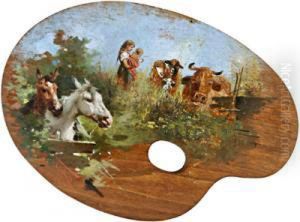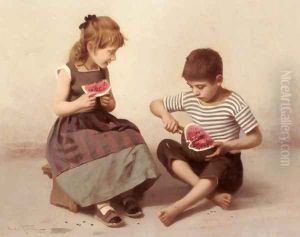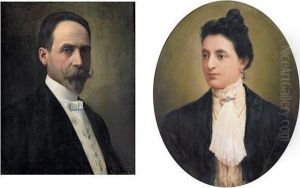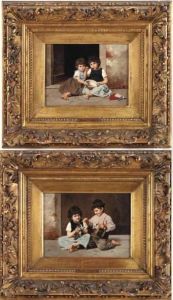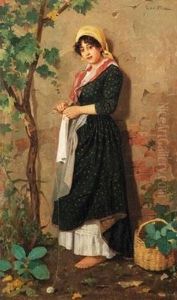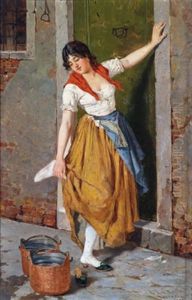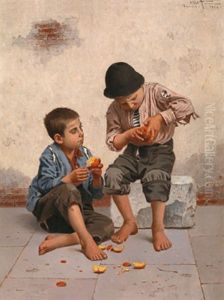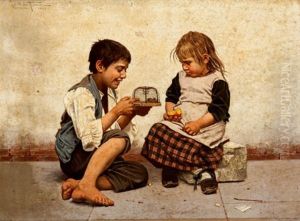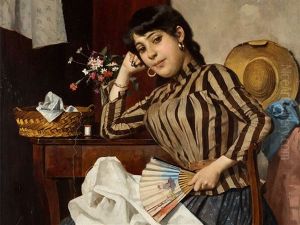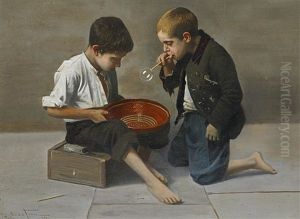Giulio Del Torre Paintings
Giulio Del Torre was an Italian painter and sculptor born in Trieste, which was then part of the Austro-Hungarian Empire, on March 4, 1887. His artistic journey began in the early 20th century, a period marked by significant upheavals and transformations in the world of art. Del Torre's work is often characterized by its diverse styles, which range from Realism to Expressionism, reflecting the various influences and artistic movements of his time.
Del Torre's artistic output was heavily influenced by his experiences during World War I, where he served as a soldier. The horrors of war and the post-war social climate became central themes in his work, with a particular focus on the human condition, suffering, and the psychological depths of his subjects. After the war, Del Torre's work took a turn towards Expressionism, and his style became more defined by bold colors, dramatic contrasts, and a dynamic brushwork that conveyed intense emotions.
In addition to painting, Giulio Del Torre was also proficient in sculpture, which he used as another medium to explore human figures and expressions. His sculptures, like his paintings, are known for their expressive qualities and their ability to capture the essence of the human spirit.
Throughout his career, Del Torre participated in many exhibitions and won several awards. He was recognized in his hometown of Trieste and beyond for his contributions to the art world. The variety in his artistic approach demonstrates his versatility and his ability to adapt to the changing artistic landscapes of the 20th century.
Del Torre continued to create art until his death in Trieste on April 27, 1968. His legacy is preserved through his works, which continue to be appreciated for their emotional depth and their reflection of the human experience. His life and work offer a window into the diverse artistic currents that shaped European art during a turbulent period of history.


